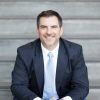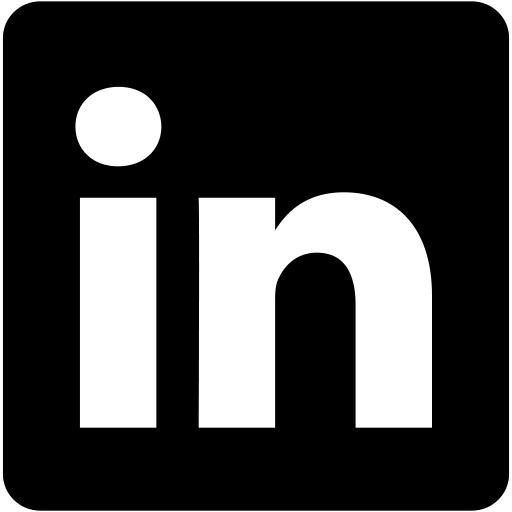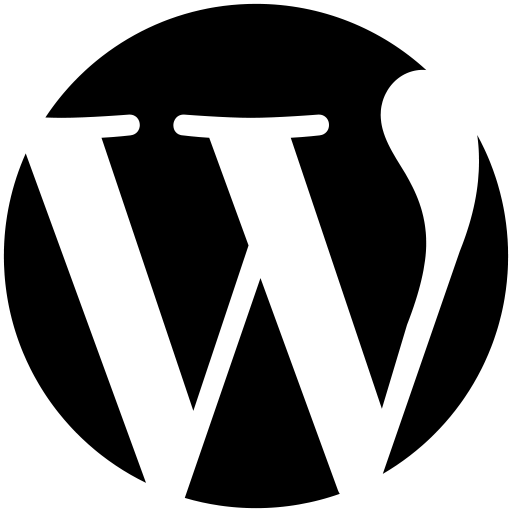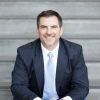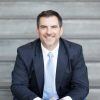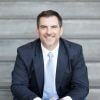This episode is sponsored by IA Path – Unlocking Your Adjusting Superpowers. Go to https://iapath.com
A transcript of this broadcast has been provided below.
Matteo Carbone is one of the world’s leading insurance thought leaders and is routinely ranked as a top 5 (and often, THE most) influential person in insurtech! In this episode, Matteo and I discussed how he got into insurance (he fell into it via consulting), how he became a thought leader (find your voice and share your insights) and we discussed his two main ventures, The IoT Observatory and Archimede SPAC, an Italian insurtech carrier. Matteo doesn’t just counsel other companies, he eats his own cooking, which combined with being Italian, means you know it’s going to be spectacolo!
TRANSCRIPT:
Nick Lamparelli: Hello, everyone, and welcome to Profiles and Risk, or should I say ciao a tutti? I’m your host Nick Lamparelli. I’m very pleased to introduce Matteo Carboni. Matteo is the founder and director of the IOT Insurance Observatory which generates and promotes innovation in the insurance sector. He’s also a co-founder of Archimede S.p.A., a special purpose acquisition company seeking to become a licensed insurtech carrier in the Italian market. And prior to these, Matteo was at Bain and is often ranked as the most influencing person in insurtech. Matteo… buon giorno.
Matteo Carbone: Buon Giorno. Thanks for inviting me today.
Nick Lamparelli: I was very tempted to do my opening in Italian but you have a very vast background and description and I could not. My Italian was too rusty to translate all of that, so welcome to Profiles and Risk. It’s been a long time coming.
Matteo Carbone: Really a pleasure to discuss insurance innovation with you and your audience.
Nick Lamparelli: Thank you so much. Matteo, I want to start off— as I mentioned your background is wide, vast, deep; how did you come into Insurance? How did you get into this line of business?
Matteo Carbone: This was something not planned. When I finished my university I worked for the first year in the consulting company of one of my professor at university, and his company was a small boutique strategic consulting company working on many sectors. One of the projects I did was on insurance — as an exciting project. It was a moment where I discovered the sector and I developed some skills. Thanks to the client that was really forward-looking about insurance company. And the topic will come back in the story of my career within the insurance sector. After a few months I’ve been contacted by Bain and Co. to join their team in Milan and they was looking for a profile that have a young [inauidible 02:24] but with some knowledge on insurance — not so easy to find. And I spend the previous 6 months working on the insurance sector so I had the opportunity to join Bain— thanks to that experience I’ve done in the sector. And my first project in Bain have been one year with the team of [inaudible 02:46] of driving the team, supporting the team in the sector via distribution channel of [inaudible 02:54] and it was 2006. So out of 12 months I had really developed a deep knowledge working closer to a fantastic team. This knowledge, this feeling that the insurance sector is complex but there are many opportunities to do stuff in a new way. So from there my focus have been 100% to the insurance sector. I’ve seen everything within the sector in many different markets. I worked in 20 different markets.
Nick Lamparelli: Yeah, and so you’re juggling two pretty large projects right now that are bigger than projects. You’re gaining traction on both. I want to talk about the first one then we’ll go in the second one a little bit later. The IOT Observatory — can you describe in your words?
Matteo Carbone: Yes. With the IOT Insurance Observatory is a think tank, I’m with the client research, develop my team and delivering the content of the research is [so much 04:06] dedicated one to one to each of the member of the [inaudible 04:12]. There are more than 45 organizations that have joined the observatory between Europe and North America. Currently, in North America you have 5 of the top 15 property, casualty insurance group. I have tech players like Microsoft, I have [inaudible 04:33]. I’m engaging them in a discussion. I am [inaudible] report, presenting the content of the research and discussing this content with their executive. In 2017 I did 130 [inaudible 04:51] between Europe and US and 350 hours of discussion on the adoption of IOT within the insurance sector. In the last 3 years I’ve worked with players that are on the [inaudible 05:07] which are of telemarket the more mature [use case] for IOT represent more than 70% of the global telemarket market. So [inaudible 05:20] them is my point of view across scouting of the best practices and the [people] around the world. I’m repeating the workshops, the round of meetings dedicated each of the members three times in a year. And at the end of each round of workshop I’m organizing one symposium, meaning a day of conference only for the members of the Observatory where I’m presenting my report [inaudible 05:47]. Some of them come to present the [inaudible 05:53] innovation. We have done a rough realization last 12 days at the American Modern headquarters. American Modern presented their experience with [inaudible 06:08]. They are experimenting this a few years [inaudible 06:15] using to trained loss adjusters and now they went to the market with [inaudible] testing this concept and the solution with clients. They join the [inaudible 06:29] presenting to the other members their experience innovating. [Inaudible] inviting players that come to discuss their point of view on insurance innovation with the member of the Observatory. So in a nutshell this is what the Observatory is doing.
Nick Lamparelli: I know you know— you’re doing the observatory so IOT is something that’s very important to you and that something that you think is going to be very important to the sector. For US carriers that have issues, problems with their legacy IT issues, I am concerned about how they implement any kind of strategy with IOT, and I almost feel like their default reaction would be to wait for everyone else to incorporate IOT, you know, kind of prove the concept a little bit. What kind of advice would you give to any carrier that’s waiting for IOT to kind of prove itself before jumping in and implementing it into their business model?
Matteo Carbone: Good question. Not simple to answer because each carrier is different. What I’m bringing with Observatory is a point of view whereas based on all the best practices I’ve seen around the world and all the [inaudible 07:55] that I’ve seen around the world. I have three main beliefs. First, it’s not a matter of changing or implementing something on the legacy issue. So I’ve seen many projects and suceed without any impact for the first two, three years on the legacy. So my first message is you can achieve some relevant [inaudible] on your portfolio without impacting your players. You can use external providers. It can be a past or an established member to achieve this quickly. Second, there are already demonstrated use cases in the current business clients. Some players, especially in Europe, have been able to create a massive quantity of value on their insurance value chain using telemarket data to manage better out to insurance claims. There are a few players that in the last couple of years have been able to change behavior with product rebuilder with all the value proposition build in order to change behavior that is not showing the number of [stars 09:13] you have achieved in the last…. You need really to build a product that is focused on just the change of behavior. The third point is the main challenge is [diagnostic 09:27] to define a strategy that fit with your company, not to integrate a copy and paste approach from what you have already seen on the market. These are the three main advices I can share with a carier that would like to start experimenting something on IOT insurance.
Nick Lamparelli: Can you discuss Archimede S.p.A.? And I think that fairly new information, and it’s probably I’m assuming you eating your dinner, you taking your own advice.
Matteo Carbone: This is my new baby. I’ve worked with the CEO of these new companies in the past 6 months to shape this strategy of the initiative that we’ll like to create the first insurtech carrier on the Italian market. So we have adapt special purpose acquisition company that this week have [inaudible 10:40] 56 million dollars. We will be listed in the next Monday. And this company will acquire after they sign off on the regulatory an existing small bank insurance carrier, so an insurance company that currently is focused on a niche project product distributed to banks. The strategy of the company after the acquisition and reverse merger with the [inaudible 11:09] will be of the encouragement of their offer. From the improvement of each step of the insurance value chain of this company leveraging the best insurtech solution. This approach is consistent with my view on insurtech with the pages of my book All the Insurance Players Will Be Insurtech. Insurtech can improve dramatically the way an insurance company is accepting, managing and tansfering this.
This is something that will require every step an evolution of the company so you’ll have a mix of solutions that will impact the [inaudible 11:55], solution that will impact the interaction with customers, solution like IOT that will reinvent the product structure.The mission of the company is to provide innovative solutions, innovative products to medium sized banks in the Italian market to bring some of the product developed for the banks to medium size brokers in the Italian market. So the goal is to cover both personalized, micro and small commercial firms to become the preferred bank insurance players for all the syntax that are appearing on the Italian market. They focus only on banking products, on [inaudible 12:45] products that people like to provide them insurance solution that fit with their business model. I will be not [iaudible 12:51] on this company, and I design together with the CEO of a company which is the [inaudible 12:59] in the Italian market when we merge the innovation strategy. I will be on the border and I will chair an advisory board on innovation because the mission of the player is to stay on this frontier of innovation.
Nick Lamparelli: Does Archimede SPAC have ambitions to, if successful, expand throughout the rest of Europe and potentially globally?
Matteo Carbone: Honestly, no. I don’t believe it’s so easy to replicate insurance model in different market. If we take a look in the story of the sector in the past 20 years—in the last 10 years I have advised many of the international players, you can see only a few stories being replicated in different market with the same approach. So I’m a strong believer that the insurance sector you need a deep knowledge on the specificity of the market. So you work more than one market but you are bring a second initiative. You need to consider all the laws that are impacting the insurance needs. So I’m not talking about their regulations, I’m talking really about why a customer this [inaudible 14:23] in many cases this is linked with the business habits of the country, it is linked with the request of the laws in the country, it is linked to the social security system of the country. All the European countries are different ones to each other. There are really few examples of players that have been successful in one market and have replicated from [inaudible 14:49] success in other market. Particularly they acquire another carrier. I think many of the [inaudible 14:57] are currently claiming to go international —I don’t believe that. I believe that these PR press release [15:11] is a different story. I would like to share with you one example of a best practice that have been able to replicate the unique models in different markets to discovery. So the South African Insurance, that is a [inaudible 15:26] approach of the last 25 years carrier — the health and life insurance approach. They are in any insurance carrier in South Africa. They have acquired a company in the UK. So currently they own a company but they started a joint venture with [Rodasha15:48] and they [inaudible] one existing carrier that demonstrated [inaudible 15:53] in the UK market but they [inaudible] and they acquire an existing carrier. In all the other markets — they are in more than 10 different markets around the globe they are acting as a service provider. So they are providing their approach, their knowledge on the aquire part, the marketing part — the ability to manage [inaudible 16:16] to existing carrier that are stronger in the local market. So from my point of view, this is the way to work internationally because you need someone that is able to execute in the local market. One of the reason because I don’t see tech giants: Google, Facebook, Amazon to succeed in the insurance market. Theire nature is to apply the same approach in all the markets. So maybe in some reach they can do something if they want to create the serious insurance market, so how to help some of the commercialize [inaudible 17:01] the solution on the single market…
Nick Lamparelli: The Italian market seems to be ahead of the game when it comes to things like telematics and IOT. What’s so special or specific about the Italian market that’s kind of created this arena where they seem to be more progressive when it comes to this kind of technology?
Matteo Carbone: I think that it’s not the context; it’s being generated by the movement of one large insurance carrier. So the larger insurance carrier in the Italian market is experimenting out of other market. So in four, five years they’ll be able to find a model that work for them. So they start put more effort in the execution of these projects and they start to scale up the solution. So they start to compete with [inaudible 18:06] their competitors. So I’m talking about [inaudible 18:11]. Let’s consider that the Italian approach on telemarket is focused only on reinventing the change management leveraging the telemarket data, but this required to change your approach [processes 18:27]. But all the storry telling of the product is concentrating, this is focus on change management and demonstrate a tremendous aspect in selecting [inaudble 18:36]. Remember in the beginning when I was talking to you about when you put in the market a product that you delivering to the customer, storytelling that make you feel that this insurance will be [redeemer if there is a crash 18:50]. And the insurer will know everything about the crash. This way the insurer can send assistance, pay customer claims, defend the customer against third party that are claiming that the customer had done something wrong. But if you are someone — something to hide to the insurer, someone that feels that my way to drive probably not so good, I’m always speeding and so on; you don’t accept device in your car. So this approach to the Italian market currently represent more than 20% of the IOT insurance [inaudible 19:3]. And this portfolio show risk adjusted 20% less claim frequency than the known telemarket portfolio. So comparing [inaudible 19:43] portfolio, the telemarket one as 20% less claim. When you have one player discover this and start to be aggressive promoting the prodcut with sharing with the customer through discount, you are obliging the competitors to follow you. So, from 2011, 2012 other insurance start to follow this approach, start to push commercially the product; and now there are more than seven players that shows a [inaudible] higher than 20%. So, my view is that if these carriers, the market leaders 15 years ago didn’t focus their expert in experimenting telemarketing, they didn’t succeed in finding these ways to manage telemarket. Currently the preparation of the Italian market was eligible as was as many of the other European markets. So everything is due to this player.
Nikolai Perilli: That’s a very interesting take on it. You have a reputation–you’re often ranked as one of the top influencers when it comes to insurtech. I’ve had conversations with several people who have quite honestly ask me “How does he do it? How does he get so much influence?” How do you get so many people to follow you? And I want to segway over to that part of your career and ask you what’s your strategy for you to become known, for you to become an influencer? What’s your social media strategy to get to that level? A lot of the listeners would be very curious to understand how you’ve curated all of this information and how you’ve presented it to establish yourself as a very important thought leader when it comes to this space?
Matteo Carbone: So, there was no planning. There was not an entry strategy. I was posting – as many people do – on LinkedIn daily, my view. I was sharing articles [inaudible 21:50] by others, then I started to receive feedback from clients when I was [inaudible 22:00] that was telling me “We’re always following your LinkedIn profile because it’s the way to the most relevant views. We don’t need to [inaudible] about the news [inaudible] to follow your profile, and you’re sharing some of the most interesting topics that are coming out. So when you start to have that kind of feedback you start to pay more attention [inaudible]. Then I start to share my self, start to not only sharing a news but I start to establish my role; so my unique point of view, my belief about insurance innovation. I think that my way to do it probably bold, loud and consistent. I’m not following the [inaudible] trend, I discuss the content. The reason because on social media I’m spending probably 80% of my time on LinkedIn because it’s a platform where you can go deeper in the content, you can really engage in discussions. I’m shaping my view on insurance innovation discussing with knowledgeable people on LinkedIn. Since the beginning of 2015 I have start to post article on LinkedIn where I was sharing my view on the sector. I was crunching numbers available in the market providing content that no one normally do. This has been the way I establish my voice in the insurance sector. Then I started to conferences. I wrote a few white paper stuff, for example one [inaudible 23:58]. I wrote a book. Obviously now I have my strategy in promoting my content on social media, so I’m using Twitter to mirror my LinkedIn activity. I’m doing live video in my feature [inaudible 24:24]. But really, the beginning have been really based on passion, content and consistency of the message.
Nick Lamparelli: I especially liked that you mentioned finding your voice and being consistent with that. I think that’s a very important message for people that are listening because I’ve had a little bit of success also trying to replicate what you just described which is knowing what I know and then being confident and being consistent in what I know. I’m curious, if a young relative approached you and asked you about a career in insurance, how would you advise that person?
Matteo Carbone: I think that based on the experience I’ve done is key to build a solid foundation. We’ve been in company for [inaudble 25:13] advising established incumbent and really knowledgeable people within this incumbent that teach me many of the foundation of the insurance business currently being able to do what I’m doing. So if you’d like to enter this market and build a career in this market, you need a solid foundation. You are active on social media, your present at conference as me — is full of cheerleaders of innovation; people that are not able to distinguish a loss ratio from a combined ratio. So I think that if you have stronger foundation, if you know the basic of this business then you can build something that will be used because it’s uncommon.
Nick Lamparelli: Matteo, when you’re flying all over the world, you’re now running essentially two businesses with a lot of other side projects that you’re doing — personally, though, when you’re aren’t engaged in insurtech or running companies, what do you enjoy doing?
Matteo Carbone: So, are you meaning in the future…
Nick Lamparelli: Yes, if you have a spare 5 minutes and you’re not working or you could if you could get a vacation or a holiday, what would you do outside of insurtech?
Matteo Carbone: To be honest, I never…I’m on the road for 12 months for 30 days each month from March 05 to April 25 in 32 cities. But in parallel I’m trying to enjoy my time in the cities where I’m going. I’m passionate on fitness so each day one hour I’m in gym, maybe in this hour I’m also answering to [inaudible 27:07] and so on .So I’m really not off work in that moment but I try to be consistent also on the physical activity.
Nick Lamparelli: I was hoping you were saying you like to race your Ferrari along the Italian Riviera.
Matteo Carbone: I’m not generating so high margin.
Nick Lamparelli: So, Mateo, you are busy, like, you are incredibly busy. You just mentioned all of the cities that you’re in. It took us awhile to schedule this podcast. Personally, how do you stay organized? How do you remain productive when you have to be in so many different places and your traveling many hours of the week, how do you stay productive and organized?
Matteo Carbone: What I’m doing is basically to plan everything in advanced or my [inaudible 28:06] in the next month where I need to be and try to find the best connection and a fantastic assistant that is booking the flights for me, finding the right spot to optimize my logistics, so I live in front of an outlook. Everything happening in my days –if something is not on outlook, it doesn’t happen. Dedicating time to something [inaudible 28:37] because you’ve got so many distractions happening, so you need to balance the emergency [inaudible] The daily to-do list is on note your adding things that priority on the top and then you find somethings [inaudible]. Unfortunately, I have something in my to-do list which is there since the 6 months; so it’s low priority but on the list.
Nick Lamparelli: Okay, I appreciate that. Thank you. For the listeners, we always ask all the guests what books have been influential in either your personal or business life?
Matteo Carbone: To be honest, the last five years I have not a lot of time to read books. If I have to decide that have influenced my life and my career it is LinkedIn. I love the discussion there. As I was mentioning to you before, I have shared my view to this platform discussing with people that have basic knowledge on the specific topic, because you are able to find who have dedicated all his career on one single topic; and on the other side allowed me to have an international exposure from the known well in one single market. This platform has offered me the worldwide market in insurance. So, my view is probably I be not able to do doing if doesn’t exist LinkedIn. So the last part of what I do is based on my friends in this platform. So for the past five years many of the businesses that I’ve created are based on people, on the relation with people alone I’ve discussed with on LinkedIn.
Nick Lamparelli: That’s perfect. That’s how I started my business too. I was very fortunate to serendipitously bump into someone on LinkedIn and we ended up forming a business relationship. I almost feel like LinkedIn, if you focus hard enough it could become a business education, you know, if you get involved in the in-depth discussions that reside there. Matteo, this has been fantastic. I want to say I thoroughly enjoy the messages you do post on LinkedIn. I thoroughly enjoy the conversations you instigate that you post up there, even the conflicting ones where I can tell you’re looking to kind of stir the pot of a little bit to generate the conversation. I think it’s been incredibly valuable both to insurtech but just to insurance in general to have your presence there, to have your ability to look through the clouds, look through the fog to find the message, but also to get other people’s opinions about what’s going on. And I appreciate you spending time with me this morning to have this conversation.
Matteo Carbone: It has been really a pleasure, and hope in 12 months to see about execution of innovation in the insurance sector. So I really [inaudible] some of the members of my think tank that go to the market with one solution.
Nick Lamparelli: Awesome. My guest this week has been Matteo Carbone. Matteo, thank you so much again.
Matteo Carbone: A real pleasure.
END TRANSCRIPT
CONNECT WITH MATTEO CARBONE:
LinkedIn: https://www.linkedin.com/in/matteocarbone/
Twitter: https://twitter.com/MCins_
IoT Observatory: https://www.connectedinsuranceobservatory.com/
MATTEO’S BOOK:
All The Insurance Players by Matteo Carbone And Andrea Silvello: https://amzn.to/2kyaSG9
MENTIONED IN THIS EPISODE:
Archimede SPAC: https://www.archimedespac.com/
SUBSCRIBE AT:
Buzzsprout RSS: https://goo.gl/5K4X3Q
Google Play: https://goo.gl/WMAvW4
iTunes: https://goo.gl/7SqwvP
Overcast: https://goo.gl/8b4cbD
Stitcher: https://goo.gl/DmE7Mi
YouTube: https://goo.gl/1Turar
About Nicholas Lamparelli
Nick Lamparelli is a 20+ year veteran of the insurance wars. He has a unique vantage point on the insurance industry. From selling home & auto insurance, helping companies with commercial insurance, to being an underwriter with an excess & surplus lines wholesaler to catastrophe modeling Nick has wide experience in the industry. Over past 10 years, Nick has been focused on the insurance analytics of natural catastrophes and big data. Nick serves as our Chief Evangelist.
Nick Lamparelli is a 20+ year veteran of the insurance wars. He has a unique vantage point on the insurance industry. From selling home & auto insurance, helping companies with commercial insurance, to being an underwriter with an excess & surplus lines wholesaler to catastrophe modeling Nick has wide experience in the industry. Over past 10 years, Nick has been focused on the insurance analytics of natural catastrophes and big data. Nick serves as our Chief Evangelist.

.jpg) Nicholas Lamparelli
Nicholas Lamparelli
